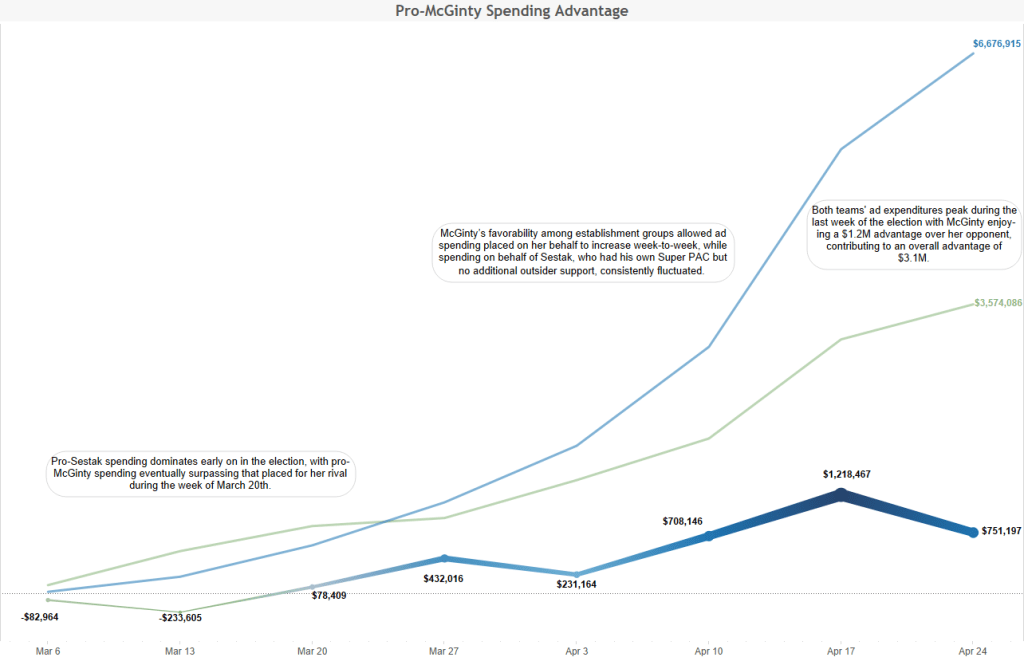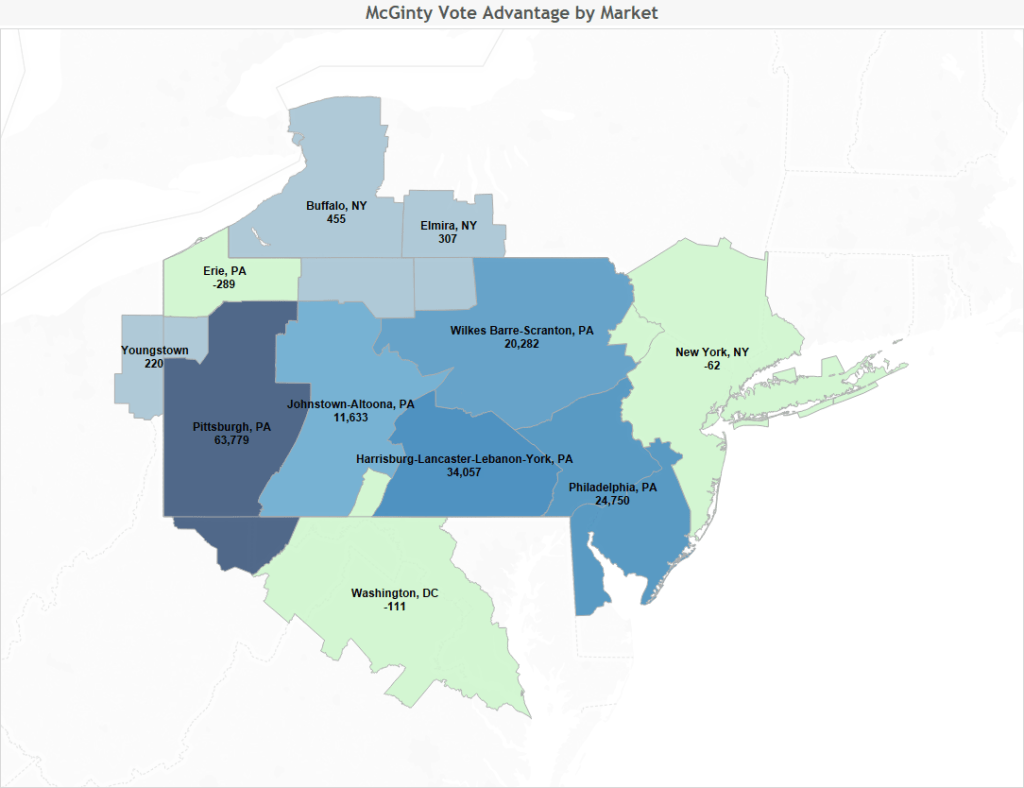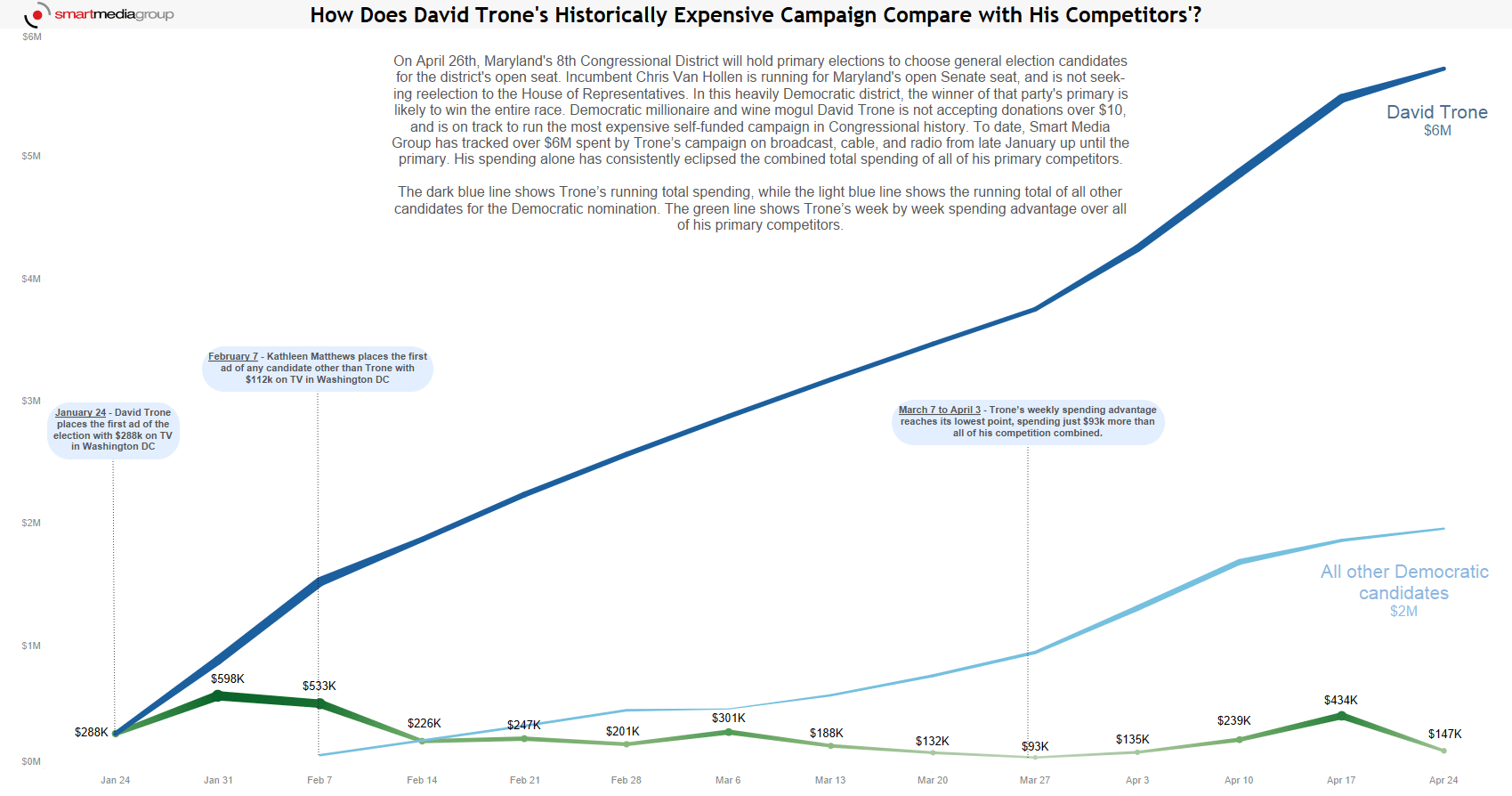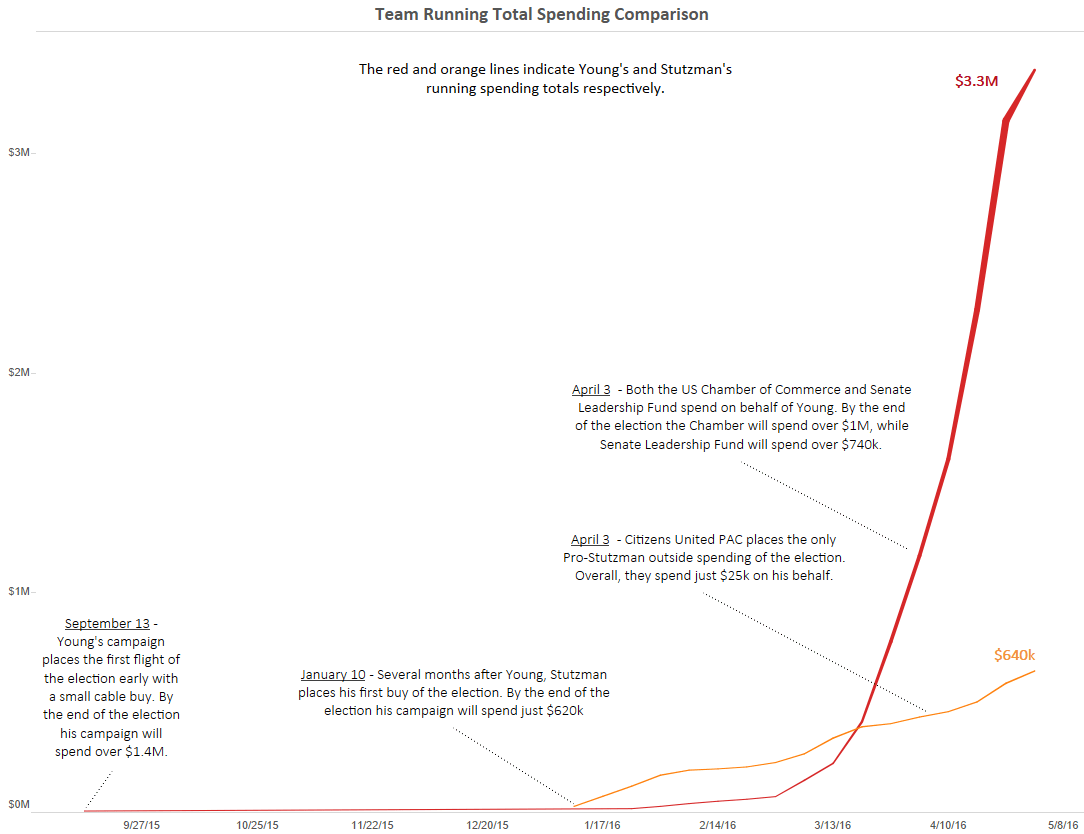May 6, 2016
With the inevitability of a Trump nomination looming over the heads of vulnerable GOP senators, Democratic Party leaders have wasted no time carefully choosing candidates whom they believe can create down-ballot nightmares for Republican incumbents in potential swing states. If the state’s recent primary was any indication, the upcoming Pennsylvania Senate general election is likely to be one of the most expensive and contested races of this already tumultuous cycle as Senator Pat Toomey attempts to defend his seat against Democratic favorite, Katie McGinty.
Pennsylvania Senate Election Analytics
McGinty, a long-time political operative, entered the race for the Democratic nomination last August while her opponent, Joe Sestak, declared his candidacy earlier in March. Sestak’s infamous unseating of long-time Senator and Democratic convert Arlen Specter during the 2010 Democratic primary ultimately handed the general election to current Republican incumbent, Senator Pat Toomey, and understandably angered the entire Democratic establishment – a mistake they have yet to forgive. Sestak’s less than lackluster reputation within his own party allowed McGinty, who was rumored to be considering a Senate bid since January of 2015, to attract strong support from numerous establishment behemoths, including the DSCC, Emily’s List, SEIU Cope, as well as President Obama and Vice President Joe Biden.
Throughout the primary, a combined total of $15.6M was spent by individual campaigns, coordinated buys, as well as numerous issue groups. While he escaped a primary challenger, Toomey enjoyed about $4M in advertising support from both his campaign and outside groups, including the US Chamber of Commerce and Concerned Veterans for America. The battle for the Democratic nomination however was much more heated with a combined $10.3M in ads placed on behalf of Joe Sestak and Katie McGinty. McGinty’s war chest of establishment support ultimately clinched her the nomination by a comfortable 10-point margin over Sestak.
Timeline of Spending
Ad spending on behalf of both candidates began during the first week of March and continued until the April primary. The following chart details the running total of spending by both pro-Sestak and pro-McGinty advertisers throughout the election. The light blue line depicts pro-McGinty spending while the light green line depicts spending placed on behalf of Sestak. The bolded line shows McGinty’s weekly spending advantage over the Sestak team.
Market Breakdown
McGinty demonstrated a strong vote advantage over Sestak in nearly every media market throughout the Keystone State, allowing her to win the nomination with nearly 43% of the vote against Sestak and Fetterman who earned 33% and 19%, respectively. Excluding Fetterman, both Democratic rivals earned about half of their electoral support within the Philadelphia market with McGinty slightly besting her opponent – gathering 52% of the vote to his 48%. McGinty’s largest vote advantage occurred within the the Pittsburgh market with the candidate earning 59% more votes than her rival. McGinty’s near landslide over her opponent also allowed her ad dollars to be spent more efficiently in every area, with each vote costing her $3.10 to Sestak’s $4.57. In fact, Sestak paid nearly double per vote in every market, with his highest rate occurring in Johnstown at $6.15 per vote to McGinty’s $2.83 per vote.
The following map details McGinty’s vote advantage by market over Sestak. The blue areas indicate strong McGinty support while the light green areas denote a narrow Sestak victory.








